Home Featured ,,,,, The new iPad 9.7 or iPad 2018 , the economic version and intended mainly but not only for the educational market, as we will see in the course of the review, is the number one novelty as far as concerns the Apple hardware of this early 2018 . Not because it introduces sensational innovations or because of the hardware features. From this point of view there is nothing that we have not already seen elsewhere, indeed there is something less.
What makes the headlights come on is the underlying philosophy that tells us that Apple is not only not ready to abandon the concept it has always had on the centrality of the iPad in its offer, but to relaunch it, seeking for it a strengthening of identity.
Why iPad 9.7 ″ 2018
To face a review of iPad 9.7 (2018), (the name is exactly this, a bit generic, but in the end the range today stands out in iPad Pro and iPad …) one can only start from the price. It is only 359 euros, (32 GB version without cellular connectivity) a very attractive cost , not so much with the rest of the competition, which is now almost extinct and in the hands of the Chinese, but in relation to the past. This determines one of the perspectives of judgment: Cupertino wants to broaden the field of potential users, first of all the schools that in the USA are now attracted by the Chromebook, but also to users who do not need to have a real computer and who prefer the convenience and intuitiveness of a touch device to be used in the armchair to navigate, chat, send emails.
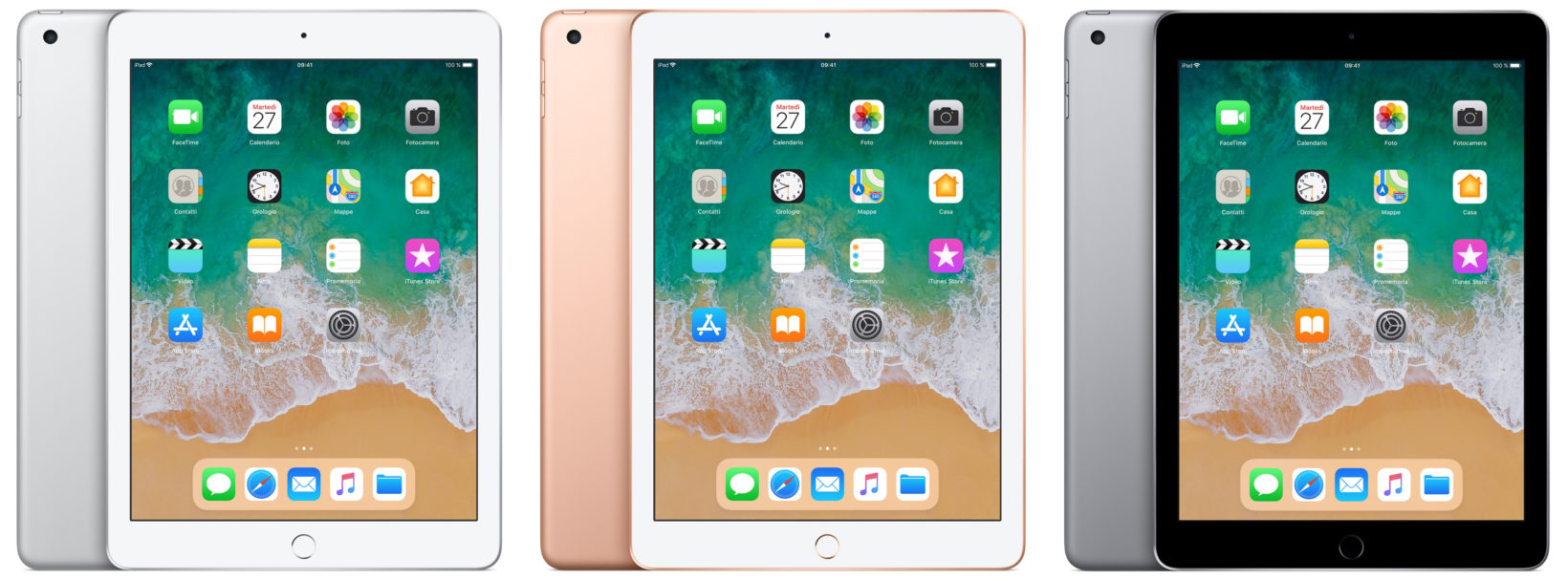 The iPad 2018 in its three colors
The iPad 2018 in its three colors
A second element is the introduction of Apple Pencil support, until now the prerogative of the Pro models. Here too we are faced with a message that reaches schools, which thanks to the pen they can give to students a device with natural use. For this purpose, also Logitech has come to help with its Crayon , a low cost stylus (not available in Italy for now) destined for the educational market. But there is also a signal for the common user, including professionals who can now enjoy the advantages of applications written for iPad Pro by relying on a device that has a very modest cost if placed in a professional context.
All of this falls within a context in which iPad sales are stagnating, especially due to a slow update cycle, with users who have old iPads, perhaps even a second-tier one, but find no valid reasons to update. Price, support for a technology like that of Apple Pencil and good hardware, could also shake things up in this sense.
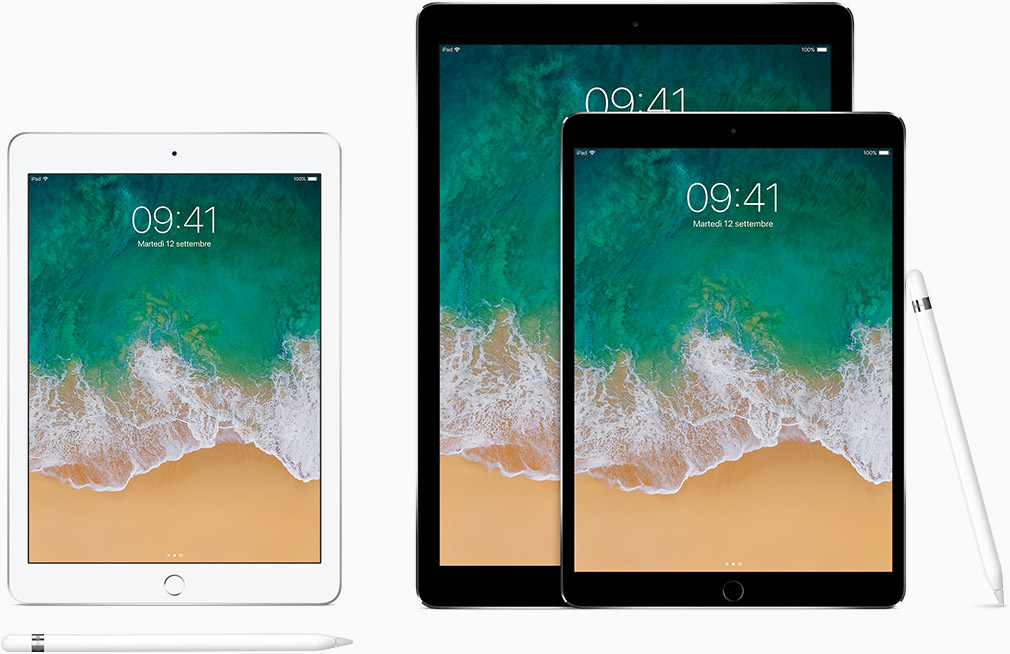 Different twins: iPad 2018 (left) compared in size with iPad Pro and iPad Pro 12
Different twins: iPad 2018 (left) compared in size with iPad Pro and iPad Pro 12
iPad 2018, a iPhone 7 in the body of the Air
The iPad 2018 box presents no surprises, everything is maniacally taken care of even if in a minimalist way as always. Under the iPad, which is shown upon opening, there are the power supply and the Lightning cable, with a small paper introductory manual.
The initialization phase of the tablet is the traditional one and lasted a few minutes: we preferred to use the backup of the old iPad Air, which was then reincarnated in the new iPad 2018, transporting Apps, documents and so on in a completely automatic process. If you have an iPhone or another iPad, everything is very simple: just bring the two devices together, using the appropriate visual code, and most of the game is done.
We then moved on to the comparison with an Air, a model which in fact aims to take the place. Aesthetically they look very similar (but on closer inspection there are many differences, starting from the Touch ID (absent in the first version Air model) up to the part below, where the speakers appear different in shape and the lock button is also missing, made useless by the new features. iOS 11.
1 of 6 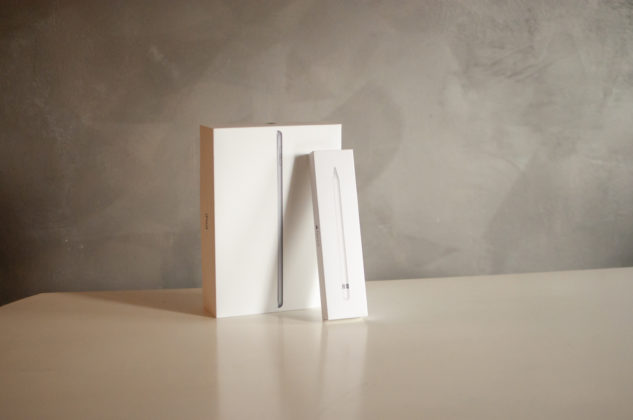
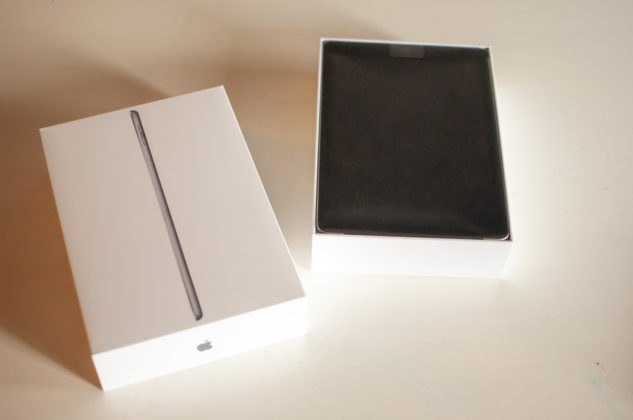
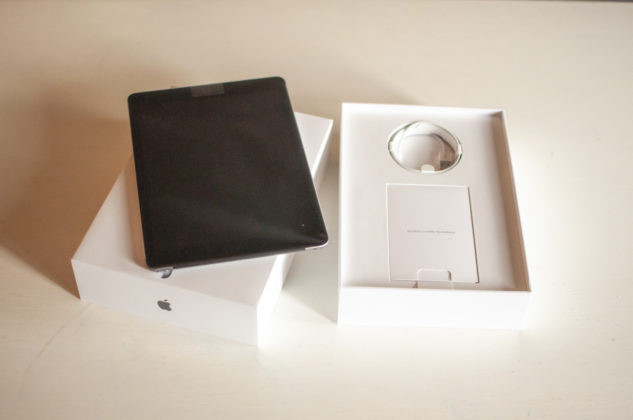
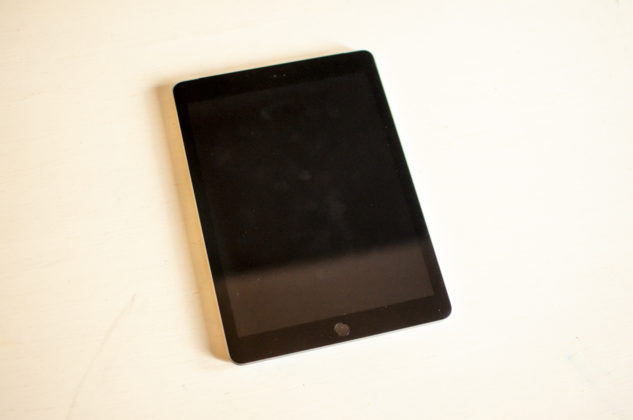
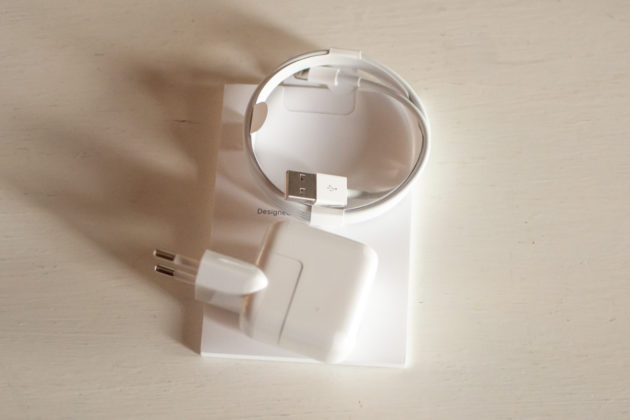
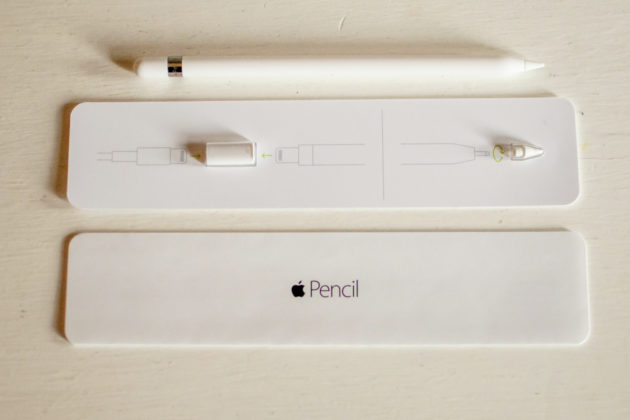
For the rest, the shape is also similar to the iPad Pro, were it not for the display of about an inch smaller (9.7 “vs 10.5”. You can also see it from the thicker edges) and the lack of speakers also in the upper part, which in this model limit the audio to one side and do not give the same spatial and stereo effect.
Last noteworthy detail, the presence of the analogue headphone jack, primarily because there is probably enough space in the iPad to leave it (unlike the iPhone, where space is lacking) and also because in this context the Jack is still very useful. , considering the average user: nothing prevents the use of Lightning or Bluetooth headphones.
From a technical point of view this iPad, internally, is substantially similar to the iPhone 7, at least for the core: same A10 Fusion chip with 64-bit architecture and integrated M10 coprocessor, Touch ID, 3-axis gyroscope, Accelerometer, Barometer, Sensor of ambient light and built-in rechargeable lithium polymer battery that theoretically allows up to 10 hours of surfing in Wi ‑ Fi or of operation with the App (9 hours in the 4G model, in mobile navigation).
1 of 3 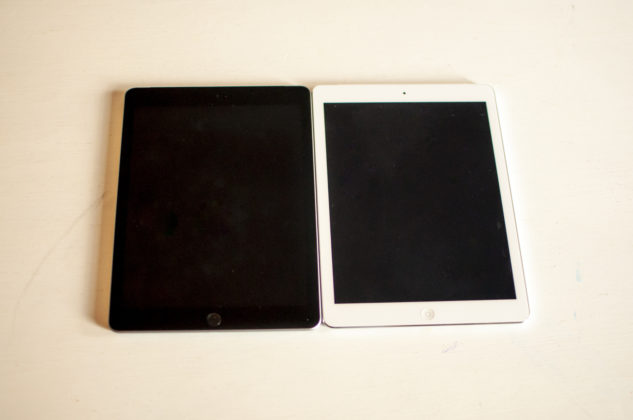 iPad 2018 compared to the Air model
iPad 2018 compared to the Air model 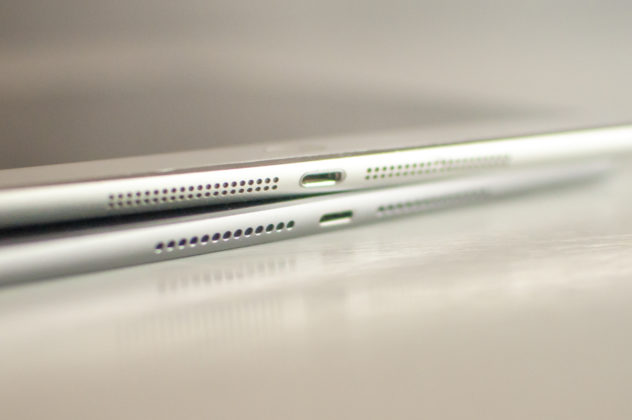 The speakers the socket for power and synchronization
The speakers the socket for power and synchronization 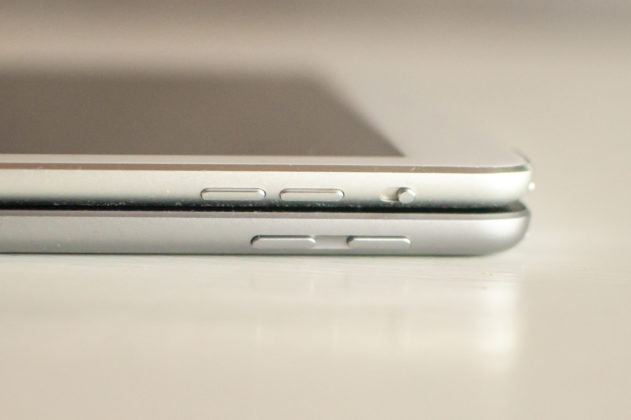
The iPad 2018 screen
An aspect to underline in the differences that, inevitably, this iPad presents with the Pro version is in the screen. Here we miss True Tone, the 120 Hz refresh (TrueMotion) and the laminated display. In practical terms: no screen that adapts the white point to the color temperature of the ambient light and a screen that should be less sensitive to pen movement. As well as a screen that shows a gap between the top and the bottom (the lamination of the screen eliminates this phenomenon). Is all this a problem? The answer is no, at least for us.
The true usefulness of True Tone remains residual and limited to a small number of users and the absence of refresh at 120 Hz (here we are at the common 60 Hz) and the non-laminated screen does not seem to affect the use of the pen. As we write below, the Apple Pencil is fluid, precise and very responsive, perhaps just a little louder when it touches the display. The detachment between the top and bottom of the screen, in fact, causes a slight, vaguely plastic “clack”, which is not heard in the Pro version.
Test bench
We have put the iPad under pressure in various ways: from a practical point of view, we have tried several AR apps that do not work on Air or show obvious calculation limits, while in the new iPad there are no such limits. Everything always went smoothly, in any area. Even leaving several apps open, these never slow down the device and the sense of fluidity is clear and very pleasant, nevertheless the 2 GB of Ram instead of the 4 that we find in the Pro version.
From a technical point of view we wanted to deepen with some more data: the free App Geekbench 4 returned a value of 3525 points for Single Core and 5946 for Multi Core, which indicate that the model in the calculation of the CPU alone stands up to the Pro model in the single Core, but it is far inferior in the Multi Core (as was to be expected), as on the other hand it detaches in both cases the model of last year by about 1000 points per test (and it aligns with the iPhone 7, although in this case the aspect is not relevant given the different areas of use).
With a score of 13002 in the graphic calculation, however, the previous model (which reached 10399) is higher by about a quarter but well detached from the iPad Pro, which instead offers an almost triple score (!).
The results are basically in line with those of other apps we used for the comparison, such as AntutuBnechmark, which is perhaps a bit older and therefore not really “aware” of the most recent hardware innovations.
Even if the comparison with iPad Pro remains unequal, the step forward compared to the previous version is there and you can feel it: but beyond the numbers, as we have said, what is striking is the extreme readiness that we have noticed in the use of iOS and of all the Apps, in particular the AR ones, which put the calculation processes and all the sensors under pressure: we really liked WWF Free Rivers for the very scenic aspect, but also GeoGebra Augmented Reality, less fun but obviously more useful among the school desks.
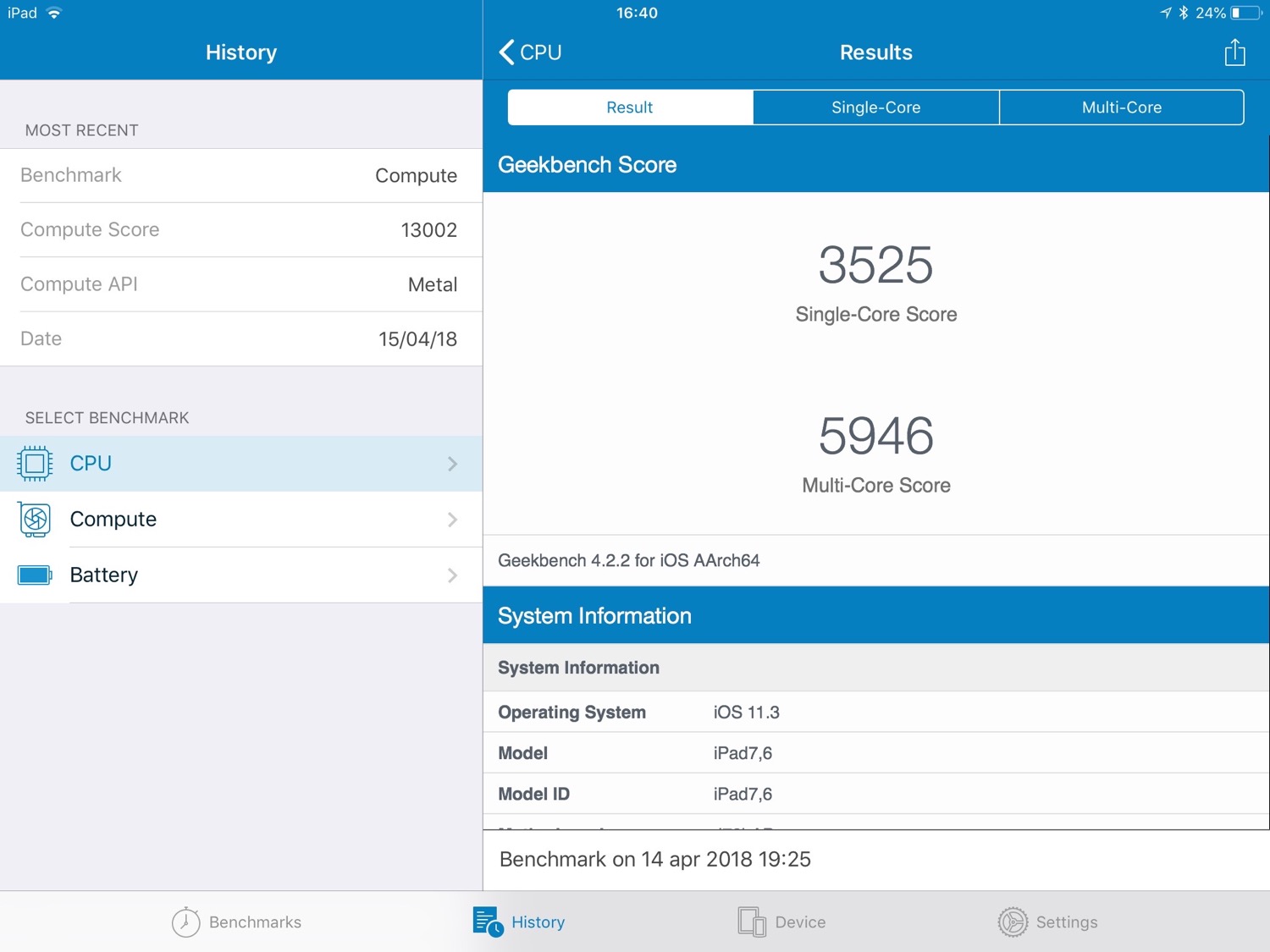 The data detected by GeekBench
The data detected by GeekBench
The eleventh finger
As already mentioned at the beginning of the article, one of the main novelties of this model is undoubtedly the compatibility with Apple Pencil (which must be purchased separately) and consequently with a whole series of third-party pens).
We immediately wanted to put the pen under pressure with some very promising Apps: the choice fell on the excellent Sketches, trying various brushes and different situations and drawing styles, which in the end is also excellent for taking notes of various kinds.
The use of Apple Pencil is very fluid (slightly plastic sound aside, due to the aforementioned absence of the laminated display): as on the iPad Pro here it seems to have a real pen that writes in an electronic canvas. No lag, no waiting or error, the pen is basically a magic wand that turns into the tool of your choice.
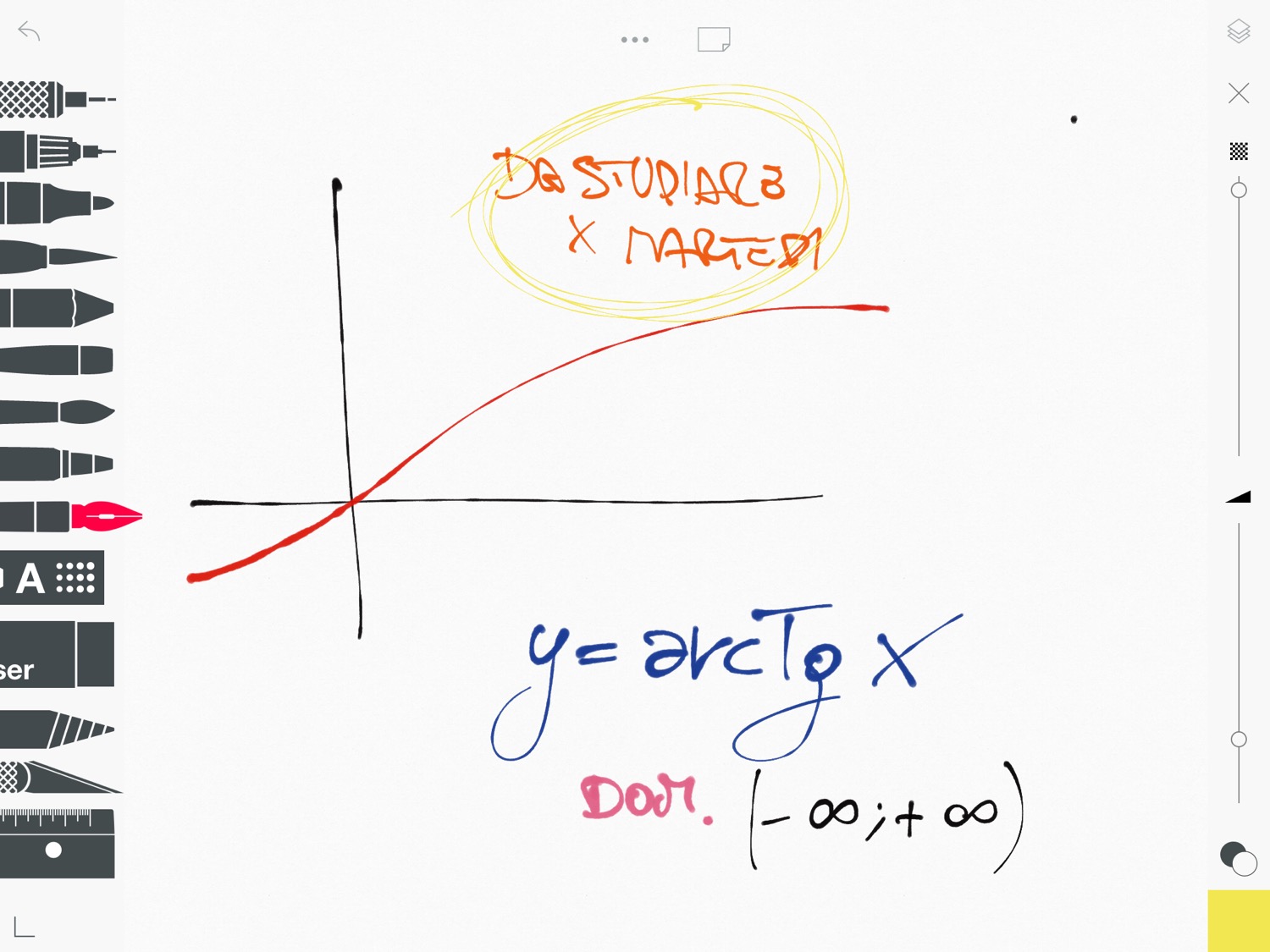 iPad 2018: used here as a notebook thanks to the App Sketches
iPad 2018: used here as a notebook thanks to the App Sketches
Among the Apps we tried we also mention Adobe Draw, free for all those who have a subscription to Adobe Creative Cloud, which allows you to draw and then transform the result into a set of vector brush strokes.
But beyond an artistic use, which users may be able to express or not, the pen has proved very useful in many other areas: in common use it works as and instead of the finger in the management of commands and Apps, while in many other Apps it can underline, highlight, report, write or many other things.
Among the most interesting programs from this point of view we found Photos (for all screenshots) but also and above all the Office educational apps such as Word, PowerPoint and Excel, in addition of course to the various Pages, Numbers and Keynote (for which we have prepared some insights aside) for which the use of an electronic pen highlights and greatly justifies the use of the iPad at school, at work and even in everyday life.
For a guide to the best apps to use with Apple Pencil, we refer you to our guide always updated.
 Far from perfect, but this test with Adobe Draw was very interesting to understand the vector potential of iPad 2018
Far from perfect, but this test with Adobe Draw was very interesting to understand the vector potential of iPad 2018
No SmartConnector
One thing that has some relevance when compared to the iPad Pro is the absence of the Smart Connector. This prevents the use of keyboards with the same intuitiveness that the older brother has. In practice we will have to limit ourselves to using a Bluetooth keyboard, with the problems that these keyboards have: ballerina connectivity, compatibility problems in some cases and the need to recharge their battery, separately from that of the iPad. Of course, there are also advantages: a Bluetooth keyboard often costs only a few euros, to take advantage of the advantages of the keyboard for SmartConnector you have to split tens of euros.
Comparison of characteristics with iPad 2017 and iPad 10.5 Pro 2017
To compare the characteristics of the models, please refer to our comparison sheet available in the “Product Sheets” section of Macitynet.
Conclusions
We like this iPad, many ssimo for different reasons to the point of saying that for many of those who read us they find their iPad Pro right in this iPad 2018. Nor is it difficult to define as the best tablet under 400 euros.
Aesthetically for its classic look that will continue to work for many years to come. Then because the 9.7 “cut is still valid for many users, especially for those who study and read (but also for those who watch movies in bed).
But this iPad is liked and also hits the mark because, and so we answer the initial basic question, it actually manages to score that “one-two” that was the premise on which Apple started. The new price positioning opens up to a certainly higher number of users (even if it actually kills the old iPad mini) without penalizing performance and functions. iPad is cheap, but in the end it loses practically nothing in the daily use of the target it is aimed at.
It certainly does not have the performance of iPad Pro, but it has enough power for the common user, for the student, the teacher, the woman who wants to have an accessory in the kitchen to use for recipes or to accompany an ironing session … also great for playing games or for a boy instead of the computer. You can take it while traveling without worrying about having a small economic capital to protect and a device to be recharged continuously.
The second important aspect is the idea of giving it compatibility with digital pens (Apple Pencil among all), which makes it a very interesting model both for the school, where it was presented, but also for work. for the office and for teaching in general, as well as for all those who have amateur artistic ambitions without having to invest much more important amounts in the Pro model. The pen, especially if the cheap Cryon arrives, would become a factor even for uses like those above mentioned in the home style: using an iPad in the kitchen with a pen, for example, is much more comfortable and reassuring than touching the display with your fingers, perhaps dirty with flour or sauce.
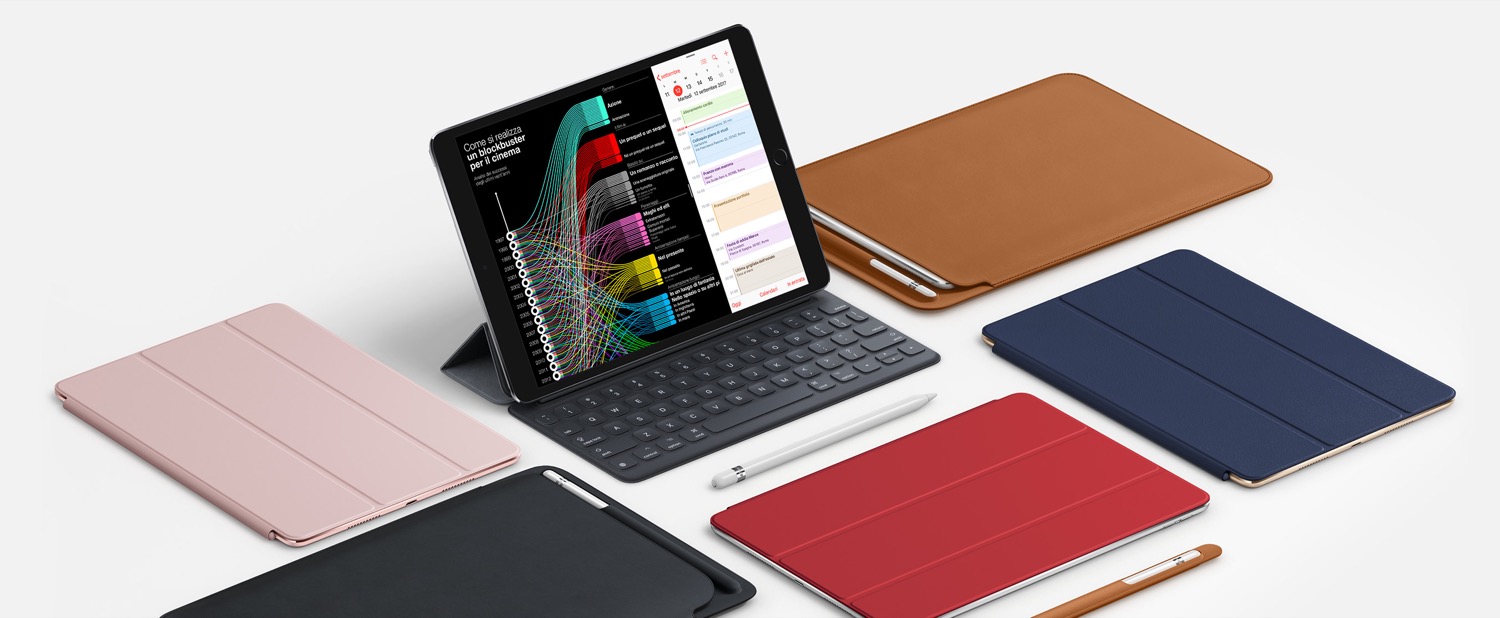 Some of the iPad 2018 accessories
Some of the iPad 2018 accessories
The advice to those who do not have an iPad or perhaps not even a laptop, is to seriously consider the purchase of this device. If you do not intend to spend a lot, to have a multifaceted and multipurpose product, for home and even professional use (without exaggerating with demanding applications in terms of performance) you are probably facing the best choice.
It would be nice to be able to recommend it also to Italian schools, but unfortunately our school system, in addition to specific training gaps on these topics, educational platforms still lacking digital centrality and financing problems, are hardly able to deploy the tools, nominative, bureaucratic and financial, necessary to create a real method capable of integrating iPad into the teaching flow.
Last warning to surfers: consider seriously the 128 GB model because, over time, the 32 GB could show limits for which it would be a shame, and also because the price difference is not so high considering the range of the offer.
iPad 2018 is available in affiliated stores in the peninsula in Silver, Gold or Space Gray colors in the model starting from 359 Euros for the 32 GB Wi-Fi model on the Apple Store or in stores. Apple Pencil costs 99 euros,
Pro
Cons
Price
359 Euros (32 GB) or 449 Euros (128 GB) Wi-Fi only, or 489 Euros (32 GB) or 579 Euros (128 GB) with Wi-Fi and 4G on the Apple Store or in Apple stores and authorized resellers. Apple Pencil costs 99 euros.
,,





